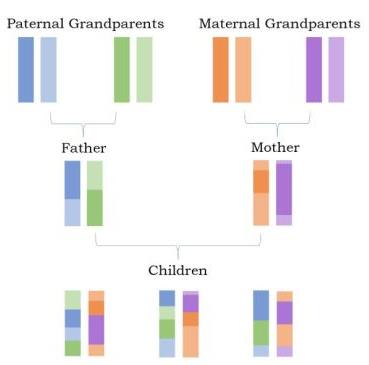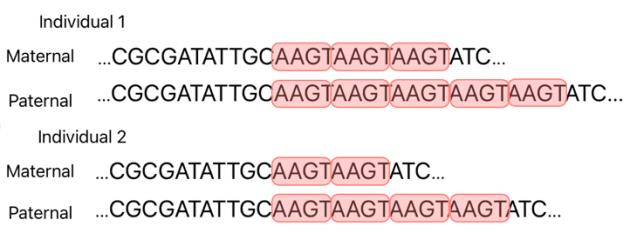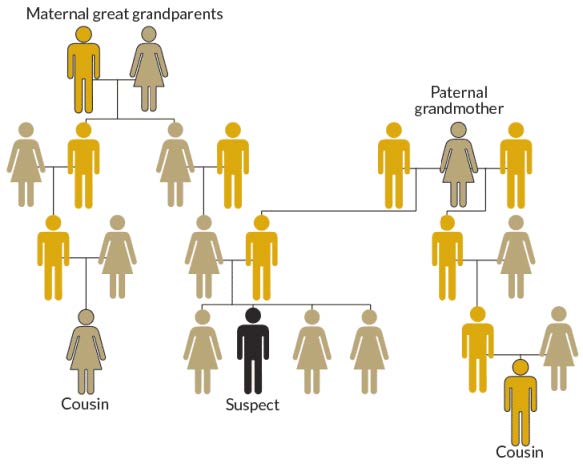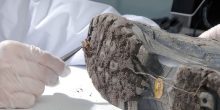Between 1973 and 1986 multiple rapes and murders were committed in the state of California. When, years later, the idea was raised that these crimes might be connected, the perpetrator became known as the Golden State Killer. Traditional DNA analysis from the samples found at the crime scenes, could not identify the culprit.
The DNA profiles that eventually led to the arrest of the suspect were not his own, but those of very distant relatives who had voluntarily uploaded their genetic data to public genealogy websites. Forensic investigators used the DNA profiles of distant family matches to narrow down their search and identified Joseph DeAngelo as the prime suspect. The method of forensic investigative genetic genealogy (FIGG) led to his arrest in 2018, where he admitted to committing thirteen murders and more than fifty rapes of women.
How does it work?
Maybe you’ve heard of companies like 23andMe, MyHeritage, or AncestryDNA. They can help you learn about your family history and find relatives you may not know about. They do this by analyzing your DNA; the genetic material which makes you who you are. Although most genetic material is the same for everyone, small sections can contain different information, these small sections are called loci. DNA is built in the same way, out of 23 chromosome pairs (and thus 46 chromosomes total). We have 22 pairs of autosomal chromosomes and one pair of sex chromosomes. Half of the autosomal chromosomes come from your mother and half from your father.

Figure 1: Inheritance of DNA
The sex chromosomes determine your sex (XX or XY). The information from the parents is stored on one of the chromosome pairs. In each generation, the DNA recombines, meaning that the child receives a random mixture of the DNA of each parent. Since DNA is inherited over generations, your DNA is also related to your grandparents, cousins, and other relatives. The percentage of DNA we share with someone decreases as relatedness gets further away.
DNA fingerprinting
You may have seen crime shows where investigators collect samples from the crime scene and send them to a lab. Within a day, a suspect is identified using a computer analysis. Although these shows don't always accurately depict the real process, they tend to use a method called DNA fingerprinting, which has been used in real forensic investigations for over 30 years. A forensic researcher can establish a DNA fingerprint of a sample by analyzing a specific number of repeats of a specific sequence that is found on a chromosome, this is also known as a tandem repeats. The regions on a chromosome that are chosen for fingerprinting are the loci, those small sections mentioned above, which differ among individuals. For example, in a specific locus on chromosome 18 of some individual, they may have 3 repeats of the sequence AAGT on one chromosome and 5 repeats of the same sequence on the same locus on the other chromosome.

Figure 2: Tandem repeats on chromosome 18 of an individual
When you do this for more loci, also on other chromosomes, you can establish a DNA fingerprint, which can be used to identify an individual. The sample found on the crime scene is compared to reference samples in databases of public genealogy websites, and when the fingerprint aligns, a match is established.
How to use this for crime solving?
Advancements in DNA analysis have expanded its use beyond its traditional use, for instance with forensic investigative genetic genealogy. You can compare specific regions of the DNA, like the ones used for DNA fingerprinting, to indicate inheritance from a common ancestor. (Identical-by-descent).
Going back to the example above in Figure 2, you expect at least one of the repeats to be the same for one person as for each of the parents. The chromosome with 3 repeats came from the mother, and the 5 repeats came from the father. Thus, at least 50% of the number of repeats is similar between the child and parent. Let's see now what happens with the descendants of two individuals. Given the two parents, the child has a probability of 25% to have either of the combinations of their chromosomes. Suppose the two individuals have tandem repeats as shown below.

Figure 3: Tandem repeats of two individuals
Given the two parents (individuals 1 and 2), the child has a probability of 25% to have either of these combinations: 3 and 2 repeats, 3 and 4 repeats, 5 and 2 repeats, and 5 and 4 repeats. Let’s say child 1 has repeats 3 and 5. Child 2 has a 25% probability of getting the same repeats, 50% probability of sharing one of the repeats, and 25% of sharing no repeats.
Using this logic, a suspect does not have to be in a DNA database. Based on the similarity of specific segments from the DNA profile found on the crime scene and the DNA profiles of relatives in a public database, you can “predict” who the suspect might be. You can even use this technique with far relatives who you share less than 1% DNA with!

A huge advantage of this method is that you expand the search range beyond a simple 1-to-1 match by considering partial matches at different degrees of relatedness.
(Ethical) dilemmas
However, since this matching method was used in the Golden State Killer case, a larger conversation was sparked between forensic DNA experts, genealogy website users, and genealogy hobbyists about the scope of work and privacy concerns. While genealogy has traditionally been a hobby pursued by passionate volunteers when it comes to solving complex crimes, the challenges might go beyond their expertise.
When FIGG emerged in criminal cases in 2018, there were no guidelines or policies on the use of it. Since then, there have been changes in regulations surrounding the use of genetic databases for law enforcement purposes. Some companies updated their policies to require a court order or warrant before disclosing genetic information to law enforcement agencies. For example, 23andMe informs customers that they closely examine each law enforcement request, and only act when they deem the request legally valid. Now, when individuals submit their genetic information to companies like 23andMe, MyHeritage, and AncestryDNA, they must specifically “opt-in” (i/o agree per default) for the use of their genetic information for law enforcement purposes. However, the issue arises when the “calculated” genetic information, of family members who did not provide their consent, is used to identify suspects.
What does the future look like?
This highlights the importance of establishing clear regulations and guidelines to ensure that forensic genealogy is used responsibly and ethically. After 15 years of no leads, FIGG was used in 2019 to solve a double-murder case in Sweden. Despite this success, the Swedish Authority for Privacy Protection now prevents the use of FIGG to solve other cold cases, because the current law does not allow genetic information to be used that way.
On March 6th, 2023, the Dutch Public Prosecution Service (OM) and the Dutch Forensic Institute (NFI) announced their intention to use genealogical databases to solve cold cases involving unidentified victims and suspects. While the use of these databases is already allowed under the current Dutch legislation, the OM will first seek permission from a judge before accessing the DNA profiles to take privacy concerns into account. When approved, the OM has already selected two cases for a pilot program, one involving an unidentified victim and one involving an unknown suspect. If successful, the OM will consider using this method in additional cases.
Conclusion
Our DNA can tell a lot about us and our family history. Besides, it can also be used in crime-solving. With the help of FIGG, investigators can use DNA samples to identify unknown suspects and victims by looking for shared ancestry among distant relatives in genealogy databases. After the Golden State Killer case, this technique has been used to solve over 200 cases, which may have been never solved otherwise. While this technology is very promising, it also raises some important concerns about privacy and ethics. Therefore, we need to make sure we are taking steps to make national and international guidelines and be transparent on the use of genetic information in law enforcement.






